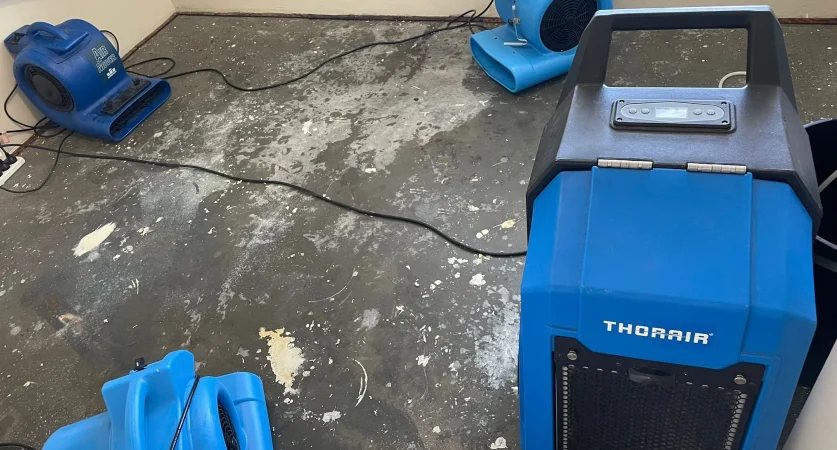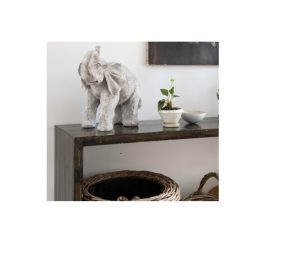Can Wet Wall Drying Prevent Mold Growth in My Home?

When water damage occurs in your home, one of the most common concerns homeowners have is the potential for mold growth. Mold not only causes unpleasant odors and aesthetic damage, but it can also pose serious health risks. The question arises: can wet wall drying prevent mold growth in my home? Understanding how professional drying techniques work, such as wet wall drying and ceiling drying, is essential for protecting your property and ensuring a safe living environment.
What is Wet Wall Drying?
Wet wall drying is a specialized process designed to remove moisture trapped inside walls after water damage, leaks, or flooding. Unlike surface drying, which only addresses visible moisture, wet wall drying targets water that has seeped into drywall, insulation, and wooden structures. This method often involves the use of advanced drying equipment, such as industrial dehumidifiers, air movers, and moisture meters.
By removing moisture thoroughly, wet wall drying helps prevent the conditions in which mold thrives. Mold spores need moisture, organic material, and warmth to grow. Wet wall drying eliminates one of these critical components, making mold growth much less likely.
How Does Wet Wall Drying Work?
The process begins with a detailed assessment of the affected areas. Professionals from companies like Structural Drying Australia use moisture meters to detect damp spots behind walls and ceilings. Once the areas of concern are identified, the drying process begins:
-
Air Movement: Industrial air movers circulate air inside walls and ceilings, accelerating the evaporation of moisture.
-
Dehumidification: High-capacity dehumidifiers pull water vapor out of the air, reducing humidity and preventing secondary moisture problems.
-
Targeted Drying Techniques: Sometimes, technicians use specialized equipment to inject air directly into cavities within walls or ceilings to ensure thorough drying.
This multi-step approach ensures that both visible and hidden moisture is addressed. Ceiling drying is often included in cases where leaks or floods have affected the overhead structures, preventing the development of mold in those hard-to-reach areas.
Why Mold Grows After Water Damage
Mold can begin growing within 24–48 hours after water intrusion. Homeowners may not notice early signs because mold often starts behind walls, under carpets, or in ceilings. Factors that contribute to mold growth include:
-
High humidity levels
-
Poor ventilation
-
Water trapped inside walls or ceilings
-
Organic materials such as wood, drywall, or insulation
By addressing these conditions promptly through professional drying techniques like wet wall drying, homeowners can prevent mold from establishing itself.
Benefits of Wet Wall Drying in Preventing Mold
Using wet wall drying provides several key advantages when it comes to mold prevention:
-
Thorough Moisture Removal: Water trapped inside walls and ceilings is eliminated, reducing the risk of mold growth.
-
Protects Structural Integrity: Drying prevents wood and drywall from weakening or warping, which can create spaces for mold to thrive.
-
Improves Indoor Air Quality: By removing moisture before mold can develop, you reduce airborne spores that can affect your health.
-
Cost-Effective Solution: Addressing moisture problems immediately reduces long-term repair costs associated with mold remediation and structural damage.
Homeowners often overlook hidden moisture pockets, but professional wet wall drying targets every corner, including ceiling cavities, to ensure your home is thoroughly protected.
How Ceiling Drying Complements Wet Wall Drying
While walls are a primary concern, ceilings are equally vulnerable to water damage, especially from roof leaks or plumbing failures. Ceiling drying is a specialized part of the drying process that focuses on removing moisture trapped in ceiling cavities, plaster, or suspended ceiling systems.
Neglecting ceiling drying can leave hidden damp areas, which serve as perfect breeding grounds for mold. By combining wet wall drying with ceiling drying, homeowners create a comprehensive moisture management strategy that significantly reduces the likelihood of mold formation.
DIY Drying vs. Professional Wet Wall Drying
Many homeowners attempt to dry walls and ceilings themselves using fans or household dehumidifiers. While these methods can remove some surface moisture, they often fail to reach the hidden damp areas inside walls or ceilings. Incomplete drying allows mold to develop unnoticed, leading to more serious problems later.
Professional services, such as those provided by Structural Drying Australia, use advanced techniques and equipment to target both surface and hidden moisture. Technicians can also monitor drying progress with moisture meters and thermal imaging cameras, ensuring that every affected area is thoroughly dried before the process is complete.
Signs You May Need Wet Wall Drying
Recognizing the early signs of water damage can help prevent mold growth. Here are some indicators that wet wall drying may be necessary:
-
Persistent damp spots on walls or ceilings
-
Musty odors in certain areas of your home
-
Bubbling, peeling, or discolored paint
-
Warped or sagging drywall
-
Visible mold growth
Addressing these signs promptly with professional wet wall and ceiling drying can save you time, money, and the stress of dealing with extensive mold damage.
Preventive Tips to Avoid Mold Growth
Even after professional drying, homeowners can take proactive steps to prevent mold:
-
Monitor Humidity: Keep indoor humidity below 60% to discourage mold growth.
-
Improve Ventilation: Use exhaust fans in bathrooms and kitchens to reduce moisture buildup.
-
Regular Inspections: Check walls, ceilings, and basements for leaks or damp spots.
-
Prompt Repairs: Fix plumbing issues and roof leaks immediately to prevent water intrusion.
Combining these preventive measures with wet wall and ceiling drying ensures a mold-free home environment.
Why Choose Structural Drying Australia?
When it comes to protecting your home from water damage and mold, choosing a trusted professional is essential. Structural Drying Australia has extensive experience in wet wall and ceiling drying, using state-of-the-art equipment and proven techniques to ensure your home dries thoroughly. Their team works quickly to mitigate damage, prevent mold growth, and restore your property to a safe condition.
By choosing professionals, homeowners gain peace of mind knowing that every hidden moisture pocket has been addressed, reducing the risk of future mold problems.
Conclusion: Can Wet Wall Drying Prevent Mold?
The answer is a resounding yes—wet wall drying and ceiling drying are highly effective in preventing mold growth when applied promptly and professionally. Removing moisture from walls, ceilings, and hidden cavities eliminates the critical conditions mold needs to thrive.
Investing in professional drying services from companies like Structural Drying Australia not only protects your home’s structure but also safeguards your family’s health. Early intervention and proper moisture management are key to keeping your living environment safe, dry, and mold-free.
By understanding the importance of wet wall and ceiling drying and taking proactive steps, you can prevent mold growth, maintain indoor air quality, and avoid costly remediation down the line.
- SHARES
- [shared_counts]

Ashmawi Sami has a Bachelor degree in Travel and Tourism Management from the University of Minnesota. He has his own travel vlogging channel. Besides being a fantastic yoga instructor he has travelled to 9 countries and planning his next trip soon. As the father of 3 dogs, he is well-trained in parenting, crowd control, and crisis situations.
ABOUT ME

Gillian is a freelance blogger, student, and full-time traveler. Each day she spends her time exploring something exciting to help people find the information they need while travelling to a new destination. Whether it be the place to enjoy holidays, or a spot to throw a party or hidden gems that you must visit in the city.
ALL CATEGORIES
- Adventure (13)
- art&gallery (1)
- Automotive (10)
- Beauty (3)
- blog (61)
- Business (817)
- cleening (6)
- contretation (1)
- couier services (5)
- courier services (1)
- driving school (1)
- Education (13)
- Event (5)
- events (1)
- fashion (1)
- Forests (5)
- gameing (6)
- Health (297)
- INDUSTRIALES (2)
- Insurance (11)
- Lifestyle (13)
- machinery (3)
- matel steel (1)
- News (2)
- property (2)
- Real Estate (19)
- Shopping (26)
- Tech (1)
- Technology (25)
- Travel (13)

JOIN US TODAY
POPULAR POST
January 27, 2021 -
Adventure Travel For The Audacious Spirit
January 27, 2021 -
Small Business Loans for Women
January 27, 2021 -
Adventure Tours in Vanuatu
RECENT POST
December 3, 2025 -
Innovative Office and Educational Solutions: Premium Furniture and Digital Learning in Dubai, UAE
In today’s dynamic business and education landscape, creating...
December 3, 2025 -
Discover the Finest Kenyan Coffee Beans: Buy, Brew, and Savor Premium Single Origin Coffee in Australia
Kenyan coffee has earned a reputation worldwide for...
December 3, 2025 -
How Much Does an Atlanta Emergency Dentist Typically Cost?
When sudden dental pain strikes, finding an Atlanta...
November 29, 2025 -
French Bedroom and Rustic Dining Tables: A Perfect Blend of Elegance and Warmth
Designing a home that balances sophistication with comfort...


















